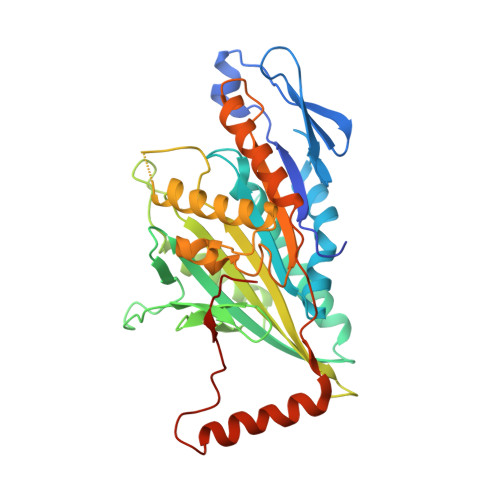Plant Kinesin-Like Calmodulin Binding Protein Employs Its Regulatory Domain for Dimerization.
Vinogradova, M.V., Malanina, G.G., Waitzman, J.S., Rice, S.E., Fletterick, R.J.(2013) PLoS One 8: e66669-e66669
- PubMed: 23805258
- DOI: https://doi.org/10.1371/journal.pone.0066669
- Primary Citation of Related Structures:
4FRZ - PubMed Abstract:
Kinesin-like calmodulin binding protein (KCBP), a Kinesin-14 family motor protein, is involved in the structural organization of microtubules during mitosis and trichome morphogenesis in plants. The molecular mechanism of microtubule bundling by KCBP remains unknown. KCBP binding to microtubules is regulated by Ca(2+)-binding proteins that recognize its C-terminal regulatory domain. In this work, we have discovered a new function of the regulatory domain. We present a crystal structure of an Arabidopsis KCBP fragment showing that the C-terminal regulatory domain forms a dimerization interface for KCBP. This dimerization site is distinct from the dimerization interface within the N-terminal domain. Side chains of hydrophobic residues of the calmodulin binding helix of the regulatory domain form the C-terminal dimerization interface. Biochemical experiments show that another segment of the regulatory domain located beyond the dimerization interface, its negatively charged coil, is unexpectedly and absolutely required to stabilize the dimers. The strong microtubule bundling properties of KCBP are unaffected by deletion of the C-terminal regulatory domain. The slow minus-end directed motility of KCBP is also unchanged in vitro. Although the C-terminal domain is not essential for microtubule bundling, we suggest that KCBP may use its two independent dimerization interfaces to support different types of bundled microtubule structures in cells. Two distinct dimerization sites may provide a mechanism for microtubule rearrangement in response to Ca(2+) signaling since Ca(2+)- binding proteins can disengage KCBP dimers dependent on its C-terminal dimerization interface.
Organizational Affiliation:
Department of Biochemistry and Biophysics, University of California San Francisco, San Francisco, California, United States of America.


















